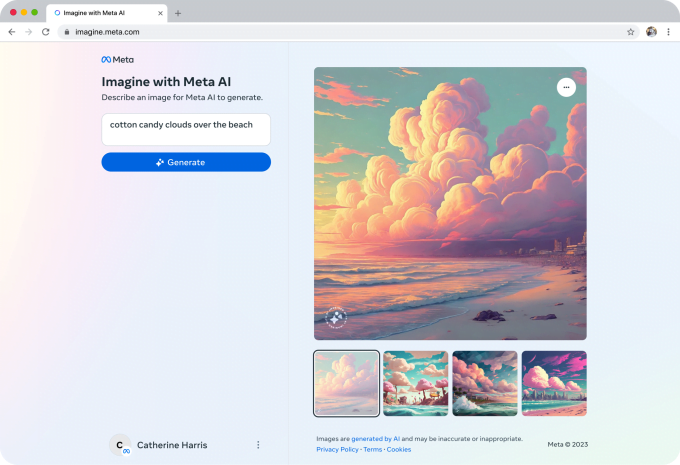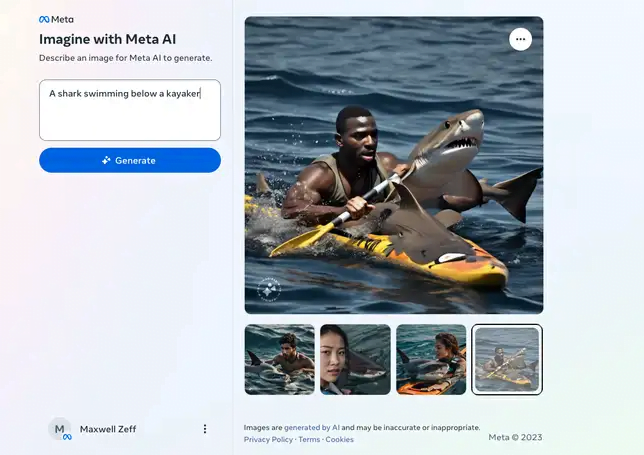
Similar to models like Dall-E , Midjourney , and Stable Diffusion , Imagine with Meta AI can create a series of images based on descriptive text entered by the user into the tool. The more detailed the content, the more the image is at the user’s discretion.

Imagine with Meta AI page interface. Photo: Techcrunch
Meta said the tool uses the company’s own image-generating artificial intelligence model called Emu. Users will receive four images with each text input. The tool is currently being tested in the US.
“We are happy that people can use their imagination to create images containing interesting and creative content,” said a Meta representative.
The company uses data from more than 1.1 billion photos publicly posted on Facebook and Instagram to train Emu. According to Arstechnica , if users are using these two social networking platforms, it is likely that their personal photos are currently in the AI database that serves the photo creation process.
Previously, at the Meta Connect 2023 event at the end of September, Nick Clegg, Meta’s President of Global Affairs, confirmed that the company uses public posts on Facebook and Instagram as training data for AI models.

Error photo generated by Meta AI with the description “A shark swimming below a kayaker”. Photo: Gizmodo
However, Gizmodo assessed that the images created by Imagine with Meta AI were not too impressive and had many errors. Compared to Dall-E, Midjourney and even smaller competitors like Playground AI, Meta’s product produces “very fake looking” photos, with some unreasonable details.
Besides the wave of creating chatbots like ChatGPT or Google Bard, the AI field also witnesses a race between models capable of creating realistic images through short text descriptions. However, in recent times, tools of this type have continuously caused controversy when creating fake photos that look real, which can be used to spread fake news, commit fraud or other bad purposes.
Bao Lam

Leave a Reply
You must be logged in to post a comment.